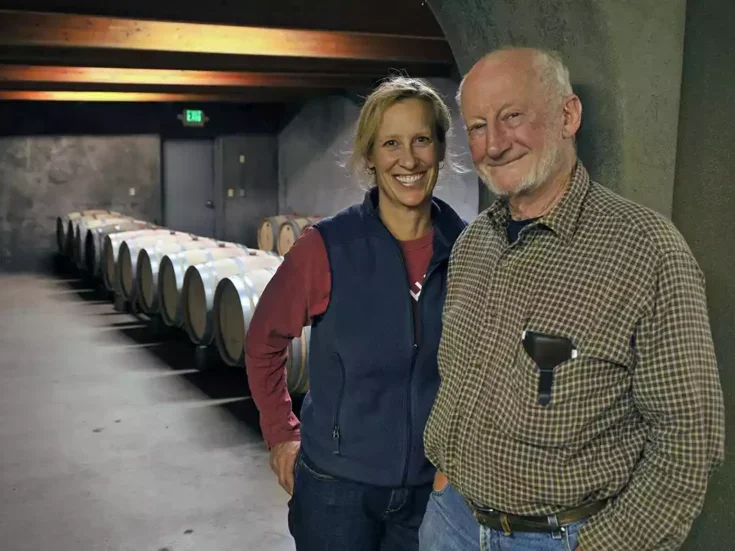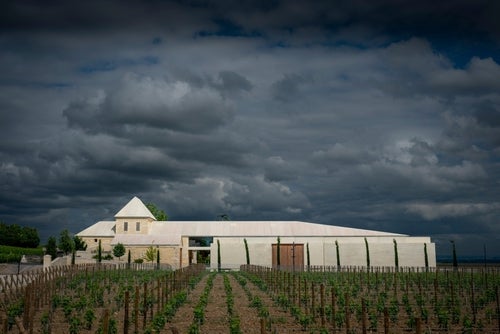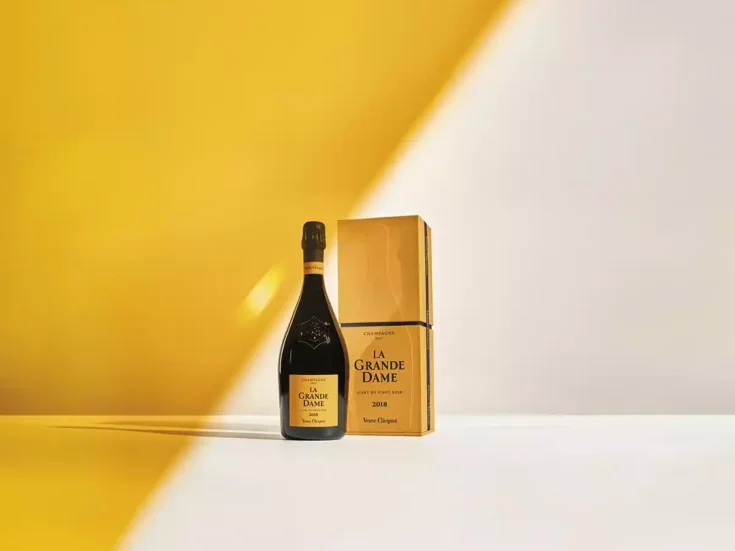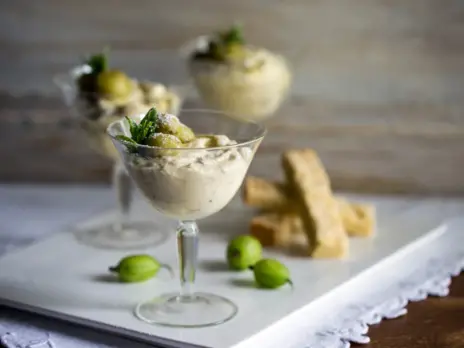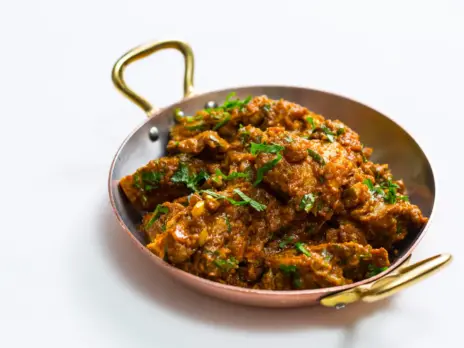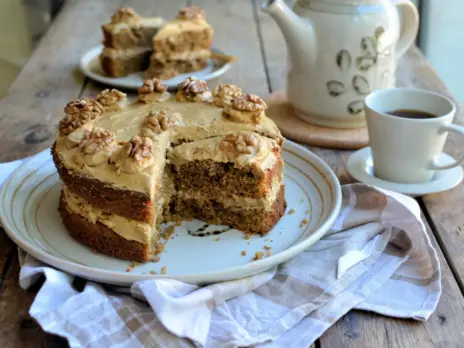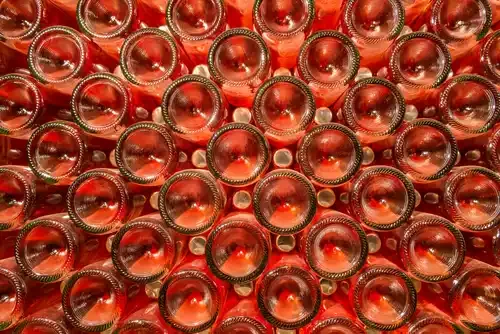
Rosé Champagne has taken some time to shake off a reputation for frivolity. Bollinger did not presume to make a Non-Vintage Cuvée until 2008, several decades after the death of the family’s eponymous matriarch, who was not, we infer, a great fan. Best left to the Folies Bergère or, heaven forfend, to the Moulin Rouge (Moulin Rosé?!). And as for Vintage Rosé…well, there we have had an amusing oxymoron to ponder. Much, it seems, has changed, and now the sighting of the oeil de perdrix can be a source of great fascination. And pleasure.
Marina Olsson, the celebrated Swedish collector and leading light in the Gomseglet Wine and Champagne Connoisseurs Club, has little time for the traps and trappings of reputation. Rosé Champagne has featured many times in her tastings (including recent standalone events for Belle Époque, Clos des Goisses Juste, and William Deutz, inter alia). Why not devote a day to a selection of the very best of the so-called Prestige Rosés? Why not indeed. Off to Malmo we go, once more, one economy flight all that is required to score nine flights of pure indulgence. There are eight houses on show, on October 19, 2024: Billecart-Salmon, Boizel, Deutz, Laurent-Perrier, Moët et Chandon, Rare, Taittinger, and De Venoge, each flying a quartet of their finest pink Champagne. Oh, and there is also an amuse bouche flight that Marina entitles, beguilingly, “Red Carpet.” The tasters include Gilles de la Bassetière, who runs De Venoge, and Benoît Gouez, the chef de caves at Moët et Chandon. A highly qualified group of tasters, then, and, as it turns out, some very high scores.
Rosé Champagne has come a long way, clearly. No longer an “off-cut” from the Non-Vintage blend treated to a haphazard period of skin maceration, or, worse, blended with a de facto Coteaux Champenois. The whole category has (maybe temporarily) plateaued at 10–11% of production, but the nature and quality of that production has hugely improved, the source of the fruit now seen as key and the nature of the vinification of the red component essential to the ensuing style. “Bubbles do not like tannins,” says Benoît, and tannin management is fundamental to the structural integrity of the final wine. Much work has been done on clones and yeasts, not to mention the extraction methodology and temperature control. If that means, as Benoît concedes, that finally less red is needed (Moët Grand Vintage now hovers around 13% of added red wine; it used to be closer to 19%), then so be it. More important is the provenance of the red grapes; Aÿ for Moët, Le Colin in Bouzy for Veuve, and Mareuil-sur-Aÿ for Deutz but three examples, with many others opting for the Kimmeridgian soils of the Aube, in Les Riceys in particular. Sound provenance and then specialized red winemaking are now both sacrosanct.
If one gets the red wine right, then control over color will ensue. Distinctive and familiar house styles were confirmed (Cristal Rosé is lightly pigmented, for example, whereas Taittinger is always darker), but even more important, perhaps, was the color consistency in each flight, with the natural “lightening” over time sometimes hard to discern. The older Amour de Deutz wines, for example, were maybe a little paler, but key was the generic similarity; the delicate onion skin to soft copper coloring that marks out the house identity. More precision, in other words. Benoît points out that today’s winemaking tends to be more reductive than of yore, which is certainly the case with his imperious lineup of six Moët Grand Vintages. Marina is impressed by the consistency of house style, the magisterial Billecart-Salmon being an excellent example, silky yet subtly and deftly structured, or maybe the ineffably elegant Comtes de Champagne, albeit less so for the two bottles that are found to be corked, alas…the only disappointment of the whole tasting! Only Rare, with a mere four releases under its belt, appears still to be searching for a house style. Personally, I preferred the tighter, more reduced style of the ’08 and the ’12, although both the ’07 and the ’14 had a natural charm. Seductive and magical, all four.
There are, then, a great many variables in play, as Gilles reminds us. Oak for the fermentation and/or maturation? Why not, in moderation (5 or 10%) avows Benoît. What about the age-old debate between maceration and assemblage, the latter often perceived as more “precise,” the former (maybe) more authentic. Adam Guy, the cerebral MD of Laurent-Perrier UK, is also in our midst, and is, unsurprisingly, an advocate for the virtues of maceration. He is on a strong wicket, given that all six of his magnums of Cuvée Alexandra are showing superbly and, as a bonus, have all been disgorged together (in early 2023) to ensure a consistency of style. The LP modus operandi requires a maceration on skins for 48–72 hours at a consistent temperature of 15ºC (59ºF). Color was never as important as fruit quality to founding father, Bernard de Nonancourt, and his daughters. Today, LP seems to have got them both right, and the fact that there have been only ten releases of Cuvée Alexandra is eloquent testament to its quality as well as a reiteration of their determination for both the Pinot Noir (60–70%) and the balancing Chardonnay to be perfectly ripe, despite their locations at either end of the appellation, to justify selection. Attention to detail is king these days.
And the results, unsurprisingly, have been excellent. No longer merely a wine for celebration or for gastronomy; now a wine for all seasons, with its very significant stylistic gamut etched from the rigors of perfectionism. I have to admit a soft spot for 2012 and 2008 as vintages, and was especially enamored of the 2012 Rare and both the 2008 Elisabeth and the Comtes de Champagne. Overall, however, there was a good showing across the board, with some of the older wines (the superb 1985 Moët Grand Vintage comes to mind) showing their mettle and some of the “lesser” years performing well. One thinks of both 2006 (its wines, according to Marina, recalling a prima ballerina) and 2007, with, respectively, outstanding wines from Taittinger Comtes and Laurent-Perrier Cuvée Alexandra, the latter overall victor ludorum. In a tightly fought competition, it has to be admitted.
A very inspiring tasting, then; methodology and detail are all-important and, in a sense the premium in price over Non-Vintage siblings is easier to justify with such a different approach in play. Not to mention the small production, itself only partially as a result of the paucity of red wine. The top wines, of which there were many, rejoiced in unparalleled hedonism, without for a moment forsaking a complex structural weave and capacity to age, the latter aspect once viewed with extreme skepticism—and not only by Madame Bollinger. Quite a feat, but certainly no oxymoron. Rudolph Nureyev was an admirer of the style, and of Comtes Rosé in particular: “When I taste this Rosé Champagne, I do not merely dance… I fly.” Very well said!
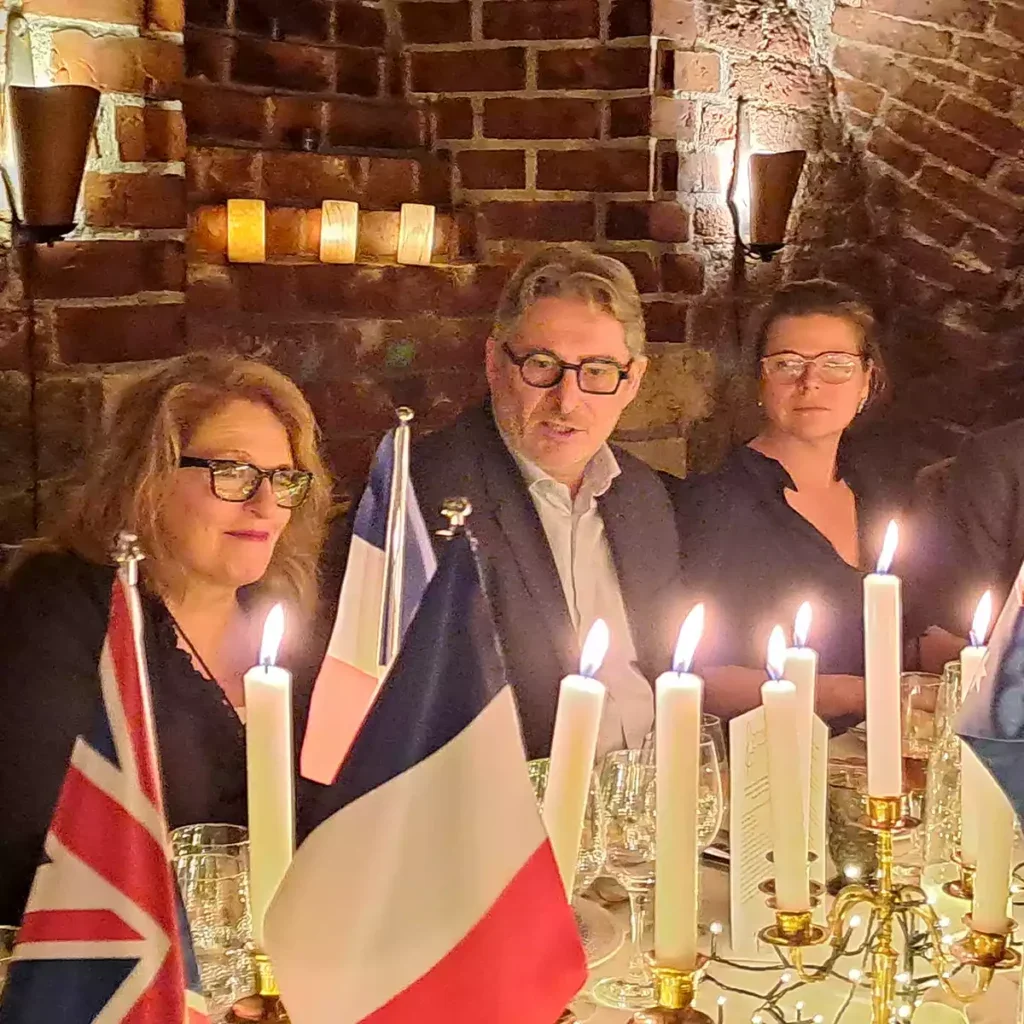
Tasting Rosé Champagne
Flight 1: Red Carpet
Krug Edition 27
(2015 base; 57% PN, 23% C, 20% PM; 10% red wine)
Pale, modest salmon color, toffee-apple nose, with appreciable development discerned; a buttery, rich maturity; hazelnut and quince power, with vanillin and beeswax on the finish. Assertive phenolic grip; child of a warm year. Spicy, savory…. sui generis. | 94
Fleur de Miraval I
(2016 base; 75% C, 25% PN)
Light, almost marmalade color, pale yellow; mature orchard-fruit aromatic, with a touch of oxidation, intimations of light strike whispered around the room. Mid-palate weight, late-season apples, Assam tea, high acidity, cooler year; mature, just losing a little fruit. Austere on the finish, its bitterness not necessarily noble. | 92
Armand de Brignac
(2018 base; 50% PN, 40% PM, 10% C; disgorged January 2022)
Onion-skin color; dignified nose, with real pedigree and Pinot-fueled power. Red apples, a hint of cherry, then black-fruit authority on the mid-palate, clearly based on a warm, spicy, assertive year yet with impressive balancing acidity and slate austerity on the finish; very imposing; authority and grip but not lacking for elegance. | 95
2014 Roederer Cristal
(55% PN, 45% C; dosage 7g/l)
Typically pale, onion-skin color; nose mute, umami, discret, reductive. Savory, a lot of build carrying ripe fruit; a warm(ish) year, lots of energy, its red-fruit Pinot voice assertive and rich, the finish imposing yet with stentorian acidity checking and balancing, with the promise of poise and an ultimate harmony deftly deferred. | 96
Flight 2: De Venoge Rosé
2014 Grand Vin des Princes
(100% PN; dosage 6g/l)
A soft, pale-peach color and a lively mousse. Youthful, authoritative red fruit, with hints of praline and oriental spice evidenced. Rounded yet long, a precocious paradox of youthful potential. | 92
2015 Grand Vin des Princes
(100% PN; dosage 6g/l)
More powerful than its older sibling, a legacy of a warm vintage, with creamy depth behind the bright Blanc de Noirs red fruit; a cushion to support the balustrade of poised and focused acidity. Dosage is evident but nicely balanced by the autolytic legacy of seven years of lees aging. Ludic and softly seductive, fit for kings as well as princes. | 91
2012 Cuvée Louis XV
(50% PN, 50% C; dosage 6g/l)
A gentle, nacreous color, which belies the power to come, itself framed by conspicuous acidity (no MLF) and a rich, savory finish. Plenty of matière and plenty of energy; a worthy exemplar of an exciting vintage, with a lot more to offer. | 94
2002 Cuvée Louis XV
(50 PN, 50% C; dosage 6g/l)
Soft, copper color, with aromatics dominated by vanilla and orchard fruits, then hints of toffee apple and soft spice. Poised acidity and focused mid-palate definition, with a beguiling white-chocolate finish, a little plusher, rounded, but elegant and with the poise that characterizes the best examples from this revered vintage. | 93
2006 Cuvée Louis XV
(50% PN, 50% C; dosage 6g/l)
Sov Broader, with more impressionistic brush strokes, its profile lacking both the poise of the 2002 and the power of the 2012. Nevertheless, the autolytic development has lent familial texture, and a generous creamy finish, itself reflecting the warmth of this sometimes-undervalued vintage. | 89
Flight 3: Boizel Rosé
2004 Joyeau de France
(62% PN, 38% C; 10% red wine; dosage 4g/l)
Salmon-pink, impressively youthful in terms of both appearance and palate profile. A firm, noticeably phenolic attack, with red fruit holding court, then a spicy, bitter-orange finish. Impressive definition and length. | 91
2000 Joyeau de France
(60% PN, 40% C; 10% red wine; dosage 5g/l)
Appreciably more evolved than the 2004, with onion-skin color and a creamy, well-upholstered palate structure, itself balanced by firm citric acidity. Compact and elegant, maybe lacking the length of some of its peers. | 90
2007 Joyeau de France
(62% PN, 38% C; 10% red wine; dosage 4g/l)
This is the odd one out from this quartet, with a smoky, flinty aromatic and even a hint of reduction. I was surprised to learn that this was the 2007, sensing a more youthful structure, its mid-palate autolytic weight underpinned by firm acidity. Plenty more to give; a real revelation, or an anomaly, depending on one’s point of view. My inclination is to mark it down as a conspicuous success! | 94
2012 Joyeau de France
(63% PN, 38% C; 10% red wine; dosage 4g/l)
Raw, edgy, and muscular, with attractive, red-cherry fruit at its core. Then raspberry and spice, hints of white pepper and cardamom. A slightly metallic finish for now, but there is so much joyful potential here. Coiled and energetic; ready to unfurl over the next five years; an exciting prospect. | 93
Flight 4: Moët & Chandon Rosé
2009 Grand Vintage
(Magnum; 30% C, 59% PN, 11% PM; 19% red wine; dosage 5g/l; disgorged November 2022)
Rich salmon color, heading toward cerise, and an aromatic that rapidly advances from reduction, to encyclopedic complexity, generous and fulsome. The ripe vintage echoes down the years with notes of praline and hazelnut and hints of sherbet and nutmeg. The low dosage and phenolic frame both lend a vinous gastronomic authority to the core of unabashed generosity. Masterly. | 95
2003 Grand Vintage Collection
(22% C, 48% PN, 30% PM; 19% red wine; dosage 5g/l; disgorged May 2022)
A highly successful if idiosyncratic 2003, with Meunier to the rescue and a spirited attack that majors on savory notes, umami, woodsmoke, and hints of clove. The acidity maintains its defiance toward the rigor of the vintage, and the touch of bitterness on the finish only serves to underline complexity. Benoît is very pleased with the progress of this challenging wine—as are we. | 92
1985 Grand Vintage Collection
(40% C, 60% PN; dosage 11g/l; disgorged May 2006)
A stunning wine from a stunning year; copper color and evocative aromas of peat, leather, and cep. Real poise and elegance, attributed by Benoît to the “saignée” character of the wine. Vestigial fizz, defiant of the passage of time, underscores the pleasure principle. The finish reminds one of gingerbread, boosted by a lick of sour honey. Maturity courts charm. | 96
2015 Grand Vintage
(27% C, 52% PN, 21% PM; 14% red wine; dosage 5g/l; disgorged July 2022)
Grip and power do not stand in the way of purity and definition, with the ripeness of the red fruit (crushed raspberry and nectarine) harnessed by a typically disciplined structure. Spice and herbs serve to widen the lens, with white pepper and juniper to the fore. Then tangerine and verbena, with a flinty foundation, which recalls petrichor. Incredibly promising, and a worthy rejoinder to those who question the merits of this increasingly divisive vintage. | 95
1990 Grand Vintage Collection
(Magnum; 31% C, 47% PN, 22% PM; 15% red wine; dosage 11g/l; disgorged June 2005)
Marginally less successful than the superlative ’85, the ’90 does not lack for savory charm, with notes of compote and Victoria plum reminding us of the glory days of this glorious vintage. The color recalls a Turner sunset. The extensive bottle age underscores complexity and vinous scope, while failing to dent structural integrity or, for that matter, a fundamental vitality. It would be fascinating to try this wine with today’s dosage level, which is to say 5g/l rather than 11g/l.| 93
2016 Grand Vintage
(42% C, 43% PN, 15% PM; 13% red wine; dosage 5g/l; disgorged June 2023)
Significantly more reticent than the 2015, with the reduction more assertive and slower to cede ground. When it does, one is struck by the vinous elegance in play. Gastronomy is key to Benoît, and he achieves this by careful tannin management of the red-wine component. The result has phenolic rigor, but also freshness and elegance. A fascinating preview of a promising vintage. | 93
Flight 5: Deutz Rosé
2013 Amour de Deutz
(58% PN, 42% C; dosage 8g/l)
A typically elegant Amour: light of color but not lacking for power or gravitas. Nectarine and Mirabelle plum on both nose and palate; the mid-palate dominated by sourdough, chalk, and verbena, with only a modest contribution from the red fruit. The austerity on the finish reflects the personality of the vintage more than that of the house and will stand down in the medium term. | 92
2009 Amour de Deutz
(57% PN, 43% C; dosage 8g/l)
A spritzy, lively, and energetic 2009, with a pleasing interplay between the grape varieties captured by a combination of citric composure and savory structure. Tension over and above the warmth of the vintage, in other words, with a nutty autolytic authority complemented by a supple stone-fruit sub-stratum. Then a redeeming lift on the finish. | 93
2008 Amour de Deutz
(64% PN, 36% C; dosage 8g/l)
Quintessential Amour de Deutz, from its light coppery color, to its sleek, pashmina mouthfeel, its fruit-bowl of potential now realized and effortlessly transformed by secondary notes of brioche, almond, and soft spice. Chalky complexity and a quietly assertive power on the finish complete the picture. | 95
2007 Amour de Deutz
(60% PN, 40% C; dosage 9g/l)
The 2007 Amour is showing well indeed, its color a burnished gold at sunset, its aromatic dominated by secondary nutty notes, rose petals, and spiced plums. Significant mid-palate grip and upstanding acidity frame a typical elegance and show off the longevity of a vintage that many felt might not last all that long. In the best hands, this is self-evidently not the case. | 93
2006 Amour de Deutz
(55% PN, 45% C; dosage 9g/l)
The group as a whole (20 tasters) liked this a little more than your correspondent; I found it significantly more evolved than the 2007 and lacking both the elegance and structural discipline of the younger wine. A pleasing, spicy, gingerbread note, however, carved out a distinctive personality that did not lack for adherents. Ready to drink, in any event. | 91
Flight 6: Billecart-Salmon Rosé
2012 Billecart-Salmon Elisabeth Salmon
(45% PN, 55% C; 8.3% red wine; dosage 3.8g/l; disgorged January 2023)
Elegant Kashmir pink of hue, initially a little reduced, a function of youth, soon dispelled and replaced by attractive Pinot scents of rosehip, freesia, and quince. There is a latent power here, beyond the formality of the weave, an exciting evolution intimated; now all that is required is patience. | 92
2008 Billecart-Salmon Elisabeth Salmon
(55% PN, 45% C; 8% red wine; dosage 7g/l; disgorged January 2019)
An outstanding example, showing the way for the more precocious 2012, unraveling slowly and with distinction. The slightly higher proportion of Pinot Noir in the blend has yielded a richly satisfying savory core, with notes of tobacco and kumquat in support, then a noble bitterness on the finish. One of the very best wines from one of the best vintages. | 96
2002 Billecart-Salmon Elisabeth Salmon
(50% PN, 50% C; 7% red wine; dosage 3.8g/l; disgorged January 2017)
A gentle sandstone color and aromatics dominated by stone fruit, almonds, and toasted pine nuts, evolving red fruit in support. In the mouth, the wine is dominated by gentle secondary characteristics, with soft leather, spice, and hints of truffle vying for textural attention. A firm line of acidity and a generous, pavonine finish. Gastronomic potential is writ large. | 94
2009 Billecart-Salmon Elisabeth Salmon
(55% PN, 45% C; 10% red wine; dosage 7.2g/l; disgorged July 2021)
A superbly balanced 2009, the generosity of the vintage captured in a magnificent and expressive statement of exuberance, with sweet and savory elements perfectly poised, a richly spicy peroration, and a refreshing undertow of acidity. More than a decade on the lees has not dulled an essential joie de vivre, and now, with a further three years of post-disgorgement aging, seems as good a moment as any to relish this gemstone. | 96
2006 Billecart-Salmon Elisabeth Salmon
(50% PN, 50% C; 10% red wine; dosage 6g/l; disgorged July 2018)
The 2006 shares much of the gravitas of the 2009 but lacks a little of the elegance. It is far from disappointing, however, with a generous creamy core and savory notes underpinned by soft spice and balancing acidity. A hedonistic allure halos the ensemble, which goes on to finish, intriguingly, with a minty lift. | 94
Flight 7: Rare Rosé
2008 Rare
(60% C, 40% PN; 13% red wine; dosage 8g/l; disgorged 2019)
The 2008 and the 2012 are more reductive in style, unwinding nonchalantly in the glass, the smoky, flinty aromatic graciously giving way to a savory sub-plot with hints of umami and quince behind the vestigial red fruit. Powerful and heroic, this is a richly satisfying Rare, the slightest hint of salinity on the finish underwriting structural complexity. | 97
2007 Rare (60% PN, 40% C, 18% red wine; dosage 10g/l; disgorged 2018)
There is something herbal, almost “sauvage,” about the 2007, which is phenolic on the finish and assertive on the attack. Notes of sourdough, rhubarb, and wild strawberry are evidenced; a complex montage built on robust foundations, flourishing five years after disgorgement. | 94
2012 Rare
(60% C, 40% PN; 8% red wine; dosage 7g/l; disgorged 2021)
The 2012 is intriguing; on the attack there is reduction and a whiff of smoke, similar, so far, to the 2008, but thereafter the identity assumes a more floral, open personality, with the red-fruit character held nicely in check and Chardonnay elegance to the fore. The acidity is clean and refreshing, none of the power of the vintage having been forsaken to forge the elegance, effortlessly achieved, it seems, and unassailable. | 96
2014 Rare (60% C, 40% PN; 18% red wine; dosage 9g/l; disgorged 2023)
Lighter than its peers in all but color, a finely composed, satisfying Rare, fleshy, gently phenolic, with purity of red-fruit personality and an impressive juxtaposition of generosity and rigor, the former very much in tandem with the house style, the latter well-suited to a cooler year, just getting into its stride. | 94
Flight 8: Taittinger Comtes de Champagne Rosé
2011 Taittinger Comtes de Champagne
(60% PN, 40% C, 12% red wine; dosage 9g/l; disgorged 2021)
A tricky, rainy year; a noble effort, therefore. The reduction wears off quickly, and there is then impressive phenolic grip, perhaps overcompensating. The red-fruit character recalls sloes and cherry, and there is a hint of cinnamon on the finish. A worthy effort! | 92
2006 Taittinger Comtes de Champagne
(70% PN, 30% C, 15% red wine; dosage 9g/l; disgorged 2016)
Softer coppery color, quietly imperious. Hints of game and truffle and a bed of herbs and dried fruit, with a noble bitterness on the finish and the calming balm of unobtrusive glycerol welding a delicious contradiction. A relatively high proportion of red wine was added to the 2006, and one suspect that it has taken time to integrate fully—greatly to the benefit of its current mature iteration. | 93
2002 Taittinger Comtes de Champagne
(60% PN, 40% C; 12% red wine; dosage 9g/l; disgorged 2021)
TCA.
2008 Tattinger Comtes de Champagne
(70% PN, 30% C; 12% red wine; dosage 9g/l; disgorged 2021)
A youthful coral color and generous, spicy aromas, red fruit and peonies, too, then brioche, apricot, and chamomile. Seductive in its generous complexity, in other words, acidity drawing a line of beauty, autolysis a mid-palate gravitas, and Pinot phenols a magisterial authority on the finish. Relatively recently disgorged, and still with much more to give. Coiled in resplendence. | 97
2012 Taittinger Comtes de Champagne
(60% PN, 40% C; 14% red wine; dosage 9g/l; disgorged January 2024)
Disgorged only at the beginning of 2024 and therefore still precocious, its firmer red-fruit core and rich color exuding confidence and potential. Balancing acidity and a poised, firmly structured finish, betraying considerable potential. | 94
2003 Taittinger Comtes de Champagne
(60% PN, 40% C; 14% red wine; dosage 9g/l; disgorged 2015)
TCA.
Flight 9: Laurent-Perrier Cuvée Alexandra Rosé
2006 Laurent-Perrier Cuvée Alexandra
(Magnum; 80% PN, 20% C; dosage 8g/l)
An exciting sextet of LP Alexandra, all disgorged at the same time (February 2023) en magnum, therefore offering a transparent matrix of comparison, each wine, seemingly, coaxing excellence from its sibling, such is the quality of the flight. The 2006 is marked by a generous, near-magenta hue, a nose of exotic spice and tangerine, then a powerful, energetic palate, its fizz still assertive, its weave velvety and seductive. A rich, resonant finish ensues. | 94
2004 Laurent-Perrier Cuvée Alexandra
(Magnum; 80% PN, 20% C, dosage 8g/l)
Understated elegance from the 2004, a barely discernible struck-match reduction soon opening up a treasure trove of fruit, red fruit primarily; behind that, quince and Braeburn apple, and even further behind, crushed almond and cinnamon, even a hint of nutmeg and hazelnut. Complex and beguiling, in other words, drinking perfectly now, the relatively recent disgorgement underwriting freshness, the actual age of the wine ensuring a pleasing maturity, without denying the wine the opportunity to shine even more in the future. | 96
1997 Laurent-Perrier Cuvée Alexandra
(Magnum; 80% PN, 20% C; dosage 9g/l)
Powerful and deceptively youthful in terms of color and primary aromatic alike. With aeration, complexity holds court, with a spicy, savory mid-palate, a pleasing weight of dried fruit, discrete yet balancing acidity, and a robust, unyielding finish. Vinous, certainly, but still demonstrably Champenois, built to charm. | 94
2012 Laurent-Perrier Cuvée Alexandra
(Magnum; 80% PN, 20% C; dosage 8g/l)
Another enigmatic 2012… one cannot fault this vintage for keeping us on our toes just over a decade down the track. It appears lighter, or in any event more “orange/amber” than its older siblings, and has a distinct nose, which somehow marries orange peel, Morello cherry, and bacon rind… self-evidently still evolving. The savory notes yield an elegant counterpoint to the core of fruit, and both the concentration of the flavor and the shard-like precision of the acidity presage a more than satisfactory future. One to try again (and again) after three years. | 93
2007 Laurent-Perrier Cuvée Alexandra
(Magnum; 80% PN, 20% C; dosage 8g/l)
Outperforming the complicated reputation of its vintage, this 2007 was a major hit with all the tasters. Modest reduction soon fades to reveal an intensity of dark, concentrated fruit, with a citric undertow and further support from spice, sous-bois, and Viennoiserie. Quintessential LP Rosé, intense and gastronomic, but, with a little time, pirouetting with Nureyevian panache around the glass. A flight of fancy. | 96
1998 Laurent-Perrier Cuvée Alexandra
(Magnum; 80% PN, 20% C; dosage 9g/l)
The 1998 divided the room, with many praising its maturity, its robust, truffley dénouement, but others, less inspired, missing a little of the tension manifested in the younger examples. Vinous wild strawberry and rose petal dominate nose and palate alike; the latter softening a little but unyielding in terms of structural integrity and harmony on the finish. The 1997 appears appreciably fresher on the day, but both are excellent. | 92

